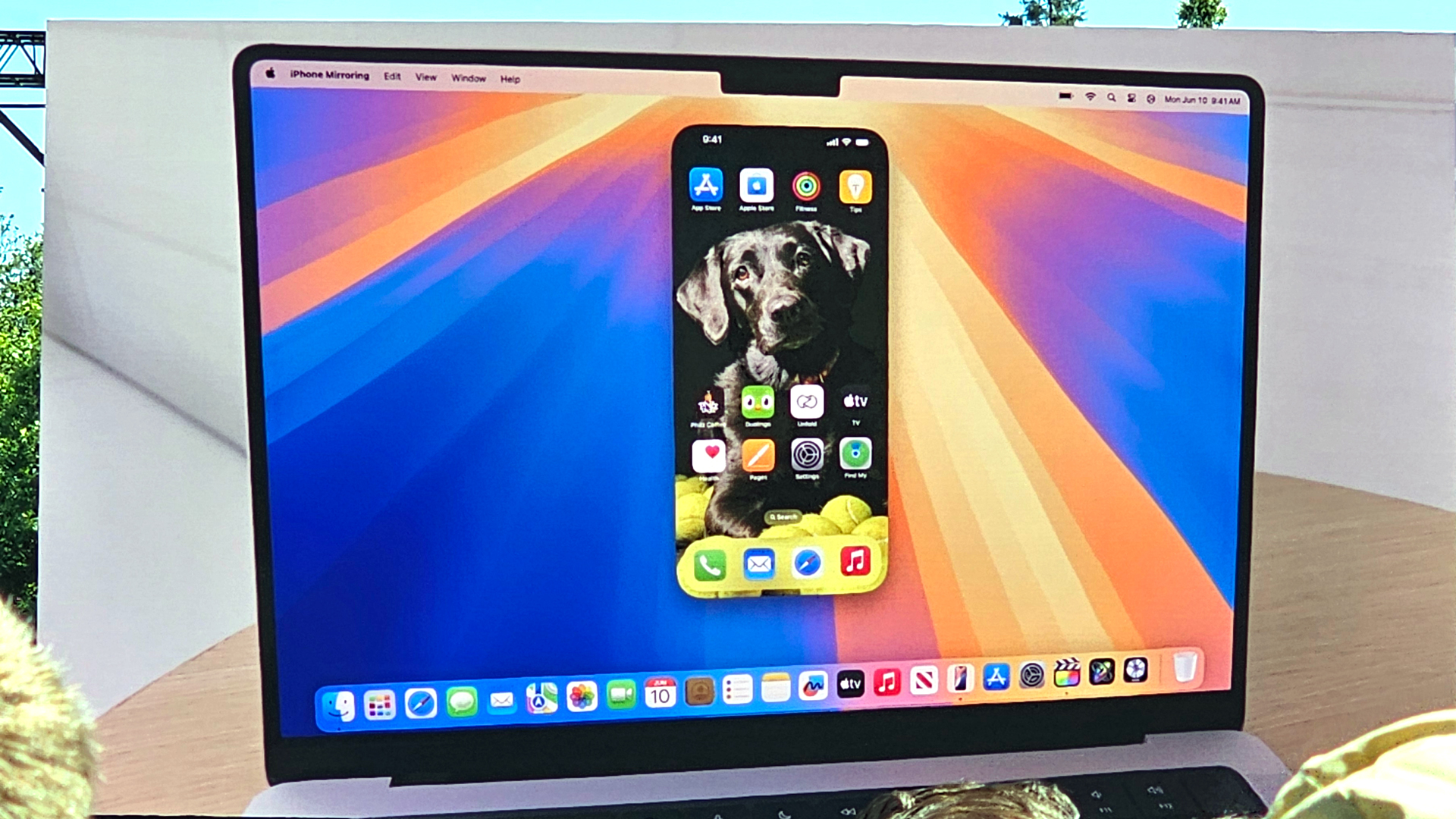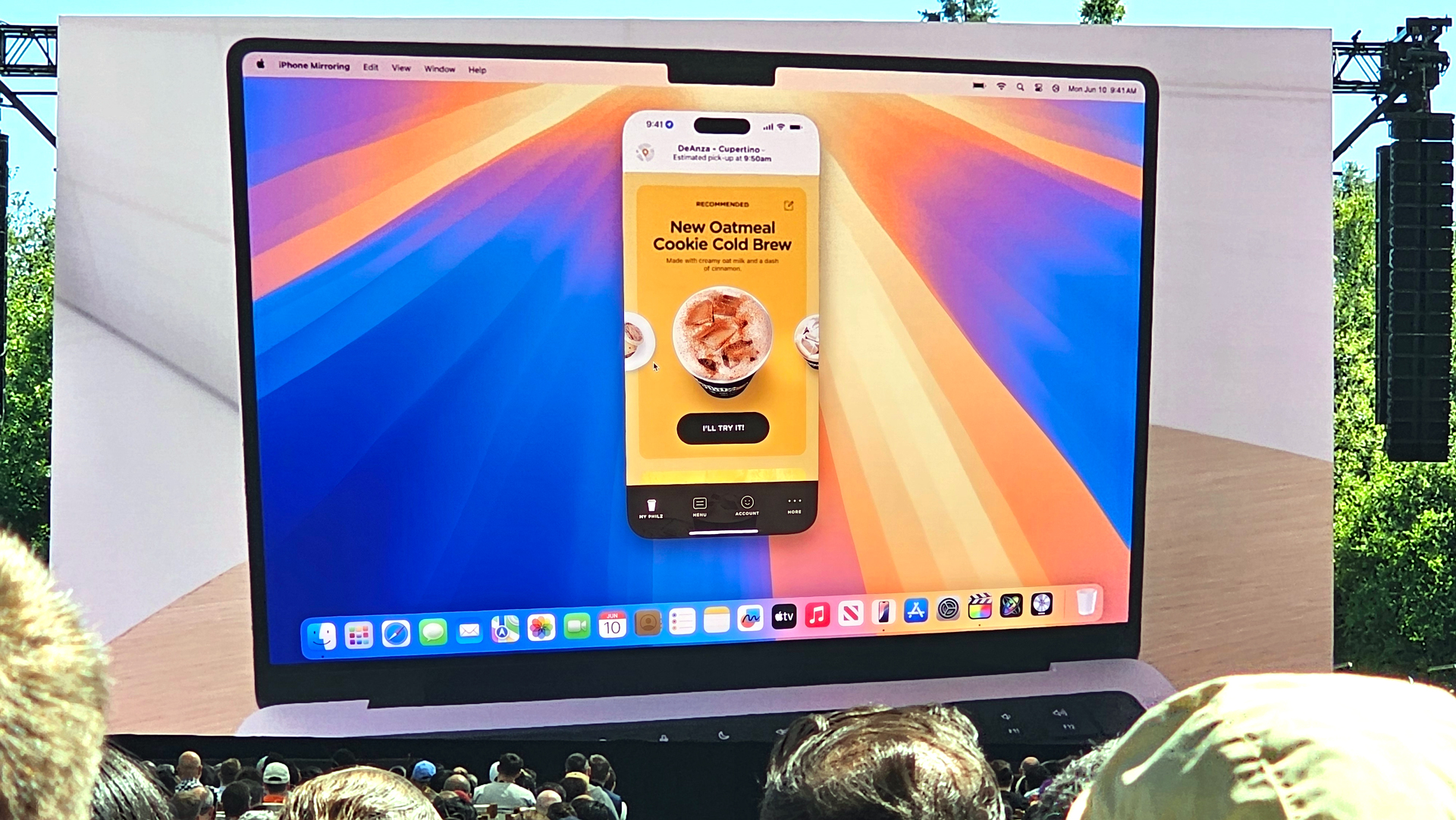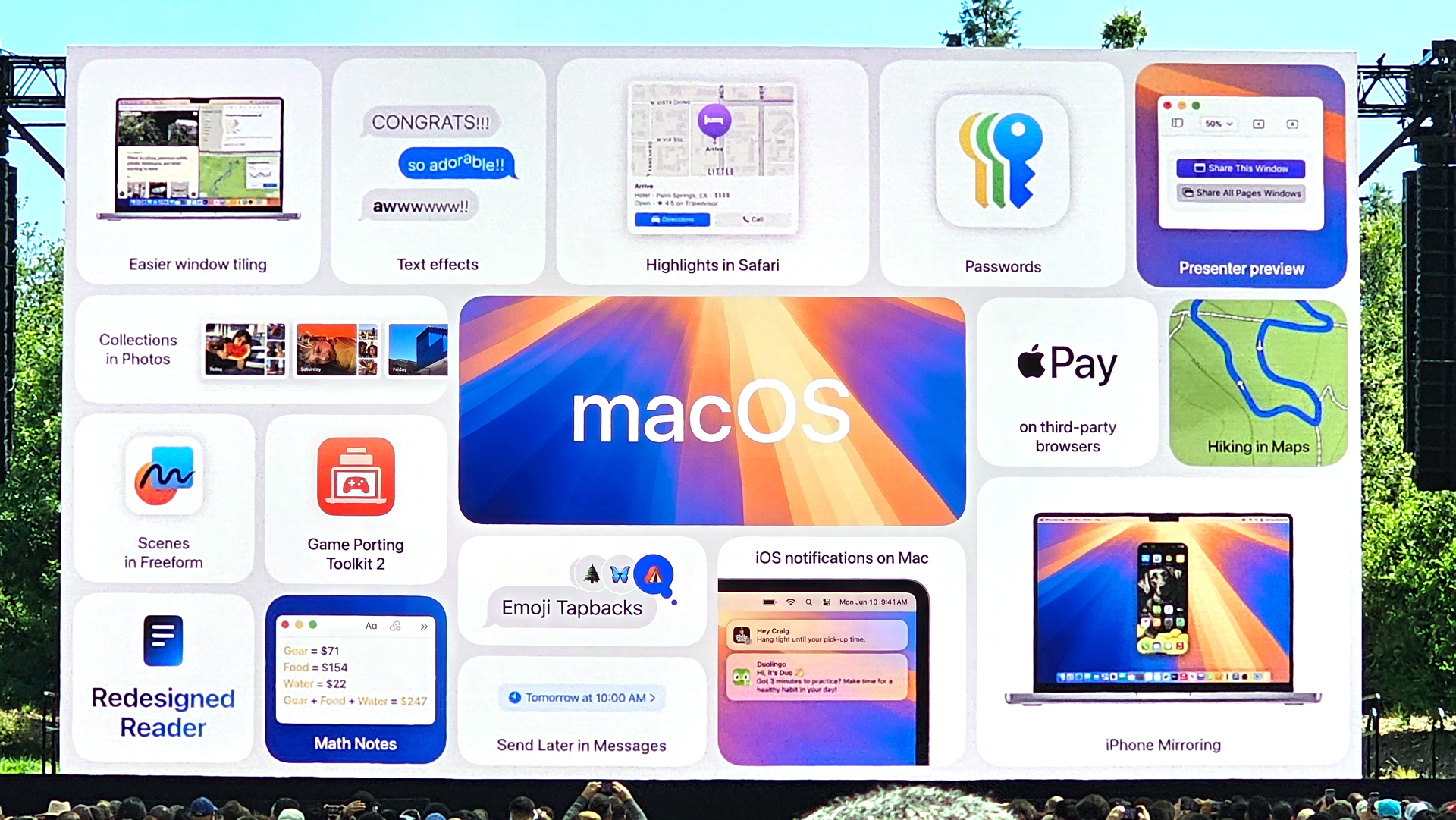
When Apple introduced macOS Sequoia and its new iPhone Mirroring capability, I didn't get it. Now, though, after seeing it in action and considering some non-obvious use cases, I may be ready to reconsider.
Apple unveiled the latest AI-infused version of macOS during its WWDC 2024 keynote, which also saw major updates to iOS, iPadOS, visionOS, tvOS, and watchOS. It also served as the launch platform for Apple Intelligence, an Apple-built and branded version of artificial intelligence. I get that Apple's been building AI PCs for a while (ever since the M1 chip, they've included an on-board neural engine), and there are many features, including a better Siri, powerful photo editing features, and smart writing help, to look forward to but I found myself fixating elsewhere.
Apple was putting the iPhone on your Mac, or, rather, an iPhone screen floating in the middle of the lovely macOS Sequoia desktop. In a way, this is the most significant redesign of the new platform. It puts an entirely different OS – a mobile one, no less – on top of a laptop or desktop.
Wow. And also, why?
I admit that I had a hard time conceiving what utility you could gain from having a second, live interface on an already busy desktop. Apple has said in the past that they build features, in some cases, based on user requests. Who had ever asked for this?
After the keynote, I had the chance to take a deeper dive, which helped me better understand this seemingly unholy marriage and why, in some cases, it might make perfect sense.
Making it so

Apple built a new app to connect your iOS 18-running iPhone to your macOS Sequoia Mac. In a demo I saw, it took one click to make it happen. Behind the scenes, the two systems are building a secure Bluetooth and WiFi connection. On the iPhone, there is a message that mirroring is live. On the Mac, well, there's the iPhone screen, complete with the dynamic Island cutout (a strange choice if you ask me – why virtualize dead space?).
I was honestly shocked at the level of iPhone functionality Apple could bring to the Mac desktop.
You can use the Mac trackpad to swipe through iPhone apps.
You can click to launch apps and run them inside the iPhone screen on your Mac desktop.
Pinch and zoom on the Mac trackpad works as expected with the iPhone apps.
There's even full drag-and-drop capability between the two interfaces. So you could take a video from the Go Pro app on your mirrored iPhone screen and drag and drop it into another app, like Final Cut Pro on the Mac.
Essentially, you are reaching through one big screen to get to another smaller one – on a different platform – that is sitting locked beside your desktop. It's stange and cool, but is it necessary?

Not everything makes sense. You can search through your mirrored phone screen, but why not just search on your desktop?
You can use the mirrored iPhone screen in landscape mode and play games. However, there's no obvious way to tell someone trying to play a game that uses the iPhone gyroscope that this is a bad idea.
I like that there's enough awareness that while the iPhone screen can look exactly like the screen on the phone, you can click to access a slightly larger frame that allows you to control the mirrored screen.
It's not the kind of mirroring that locks you in. To end it, you just pick up and unlock the phone to end the connection.
Even seeing all this, though, I wondered how people might use iPhone Mirroring.
Even seeing all this, though, I wondered how people might use iPhone Mirroring. There's the opportunity to play some games that aren't available on Mac. Multi-player word game fans might like that if they get a notification, they can open the mirrored phone screen, make a move, and then return to work.
When macOS Sequoia ships later this fall, you'll even be able to resize the mirrored iPhone window, which I guess could be useful for landscape games.
Notifications from your phone sounds redundant, especially for those of us in the iCloud ecosystem where all our Apple products get the same iMessages. But the system is smart enough to know it shouldn't repeat notifications on both screens, and you'll have the option to decide which iPhone notifications appear on your Mac.
Some notifications only appear on your iPhone, and others appear in both places, but you can't always act on them on the Mac. This new feature might bridge that gap. A fellow journalist mentioned that iPhone mirroring would finally give him a way to jump from a notification he saw on his Mac for his baby cam app, where this is no cam app, to the live feed on the iPhone. This finally struck me as truly useful.
Is that enough of a reason to have your iPhone screen pasted on your Mac desktop? I don't know. It might take up too much real estate on my MacBook Air 13-inch, but it would be kind of cool on a 27-inch iMac, if I had one.







